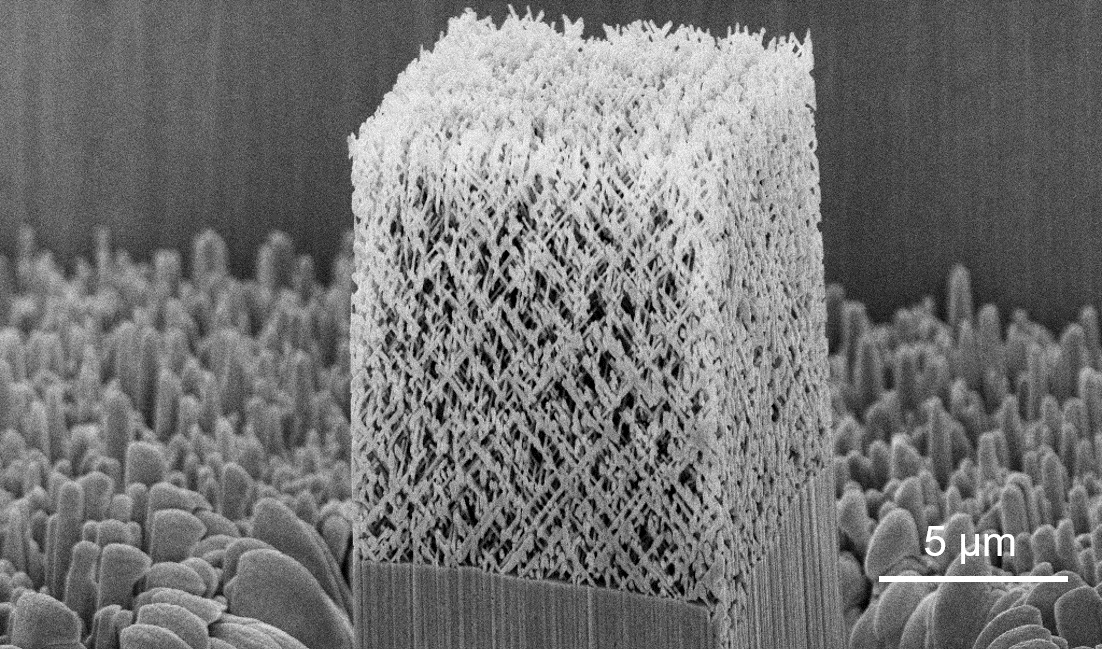| Apr 21, 2023 |
Researchers create nanoscale mechanical metamaterials with exceptional energy absorption
(Nanowerk News) A team of researchers from the Materials Research Center of the Institute of Modern Physics (IMP) of the Chinese Academy of Sciences (CAS) and Chongqing University has successfully fabricated mechanical metamaterials with ultra-high energy absorption capacity using the ion track technology. Their findings were published in Nature Communications as Editors' Highlights ("Mechanical metamaterials made of freestanding quasi-BCC nanolattices of gold and copper with ultra-high energy absorption capacity").
|
 |
| SEM image of a FIB-milled quasi-BCC beam nanolattice. (Image: Materials Research Center of the Institute of Modern Physics)
|
|
Mechanical metamaterials are a class of composite materials that possess artificially designed structures, resulting in extraordinary mechanical properties that traditional materials do not have. Among these materials, energy absorption mechanical metamaterials are capable of absorbing mechanical energy more efficiently, requiring the material itself to possess both high strength and high strain capacity. This is a challenging feat to accomplish as they rarely co-exist in general.
|
|
Nanolattice is a new class of mechanical metamaterials with characteristic sizes on the nanoscale. These porous materials possess unique mechanical properties due to size effects, geometrical configuration, and material selection. Nanolattice is expected to bring revolutionary applications in the field of high-performance functional materials in the future, especially because of its better mechanical properties with lighter weight.
|
|
Beam-structured nanolattice is the research focus of nanolattice metamaterials. However, it has been challenging to fabricate metallic beam nanolattice with beam diameters less than 100 nm, making their mechanical properties ambiguous.
|
|
Using the Heavy Ion Research Facility at Lanzhou (HIRFL), the researchers were able to fabricate a new type of quasi-body centered cubic (quasi-BCC) beam nanolattice mechanical metamaterial with the ion track technology. The beam diameter of the quasi-BCC nanolattice can be as small as 34 nm, which is a record low beam diameter of mechanical metamaterials.
|
|
The researchers demonstrated that gold and copper quasi-BCC beam nanolattices have excellent energy absorption capacity and compressive strength. In fact, the energy absorption capacity of the copper quasi-BCC beam nanolattice exceeds that of previously reported beam nanolattices. The yield strength of the gold and copper quasi-BCC beam nanolattices exceeds that of the corresponding bulk materials at less than half the density of the latter.
|
|
Furthermore, the researchers revealed that the extraordinary mechanical properties are mainly due to the synergistic effect of size effects, quasi-BCC geometry, and good ductility of metals.
|
|
Overall, this study sheds light on the mechanical properties of beam nanolattices and applies the ion track technology as a new method for the exploration of beam nanolattice with ultra-high energy absorption capacity.
|

